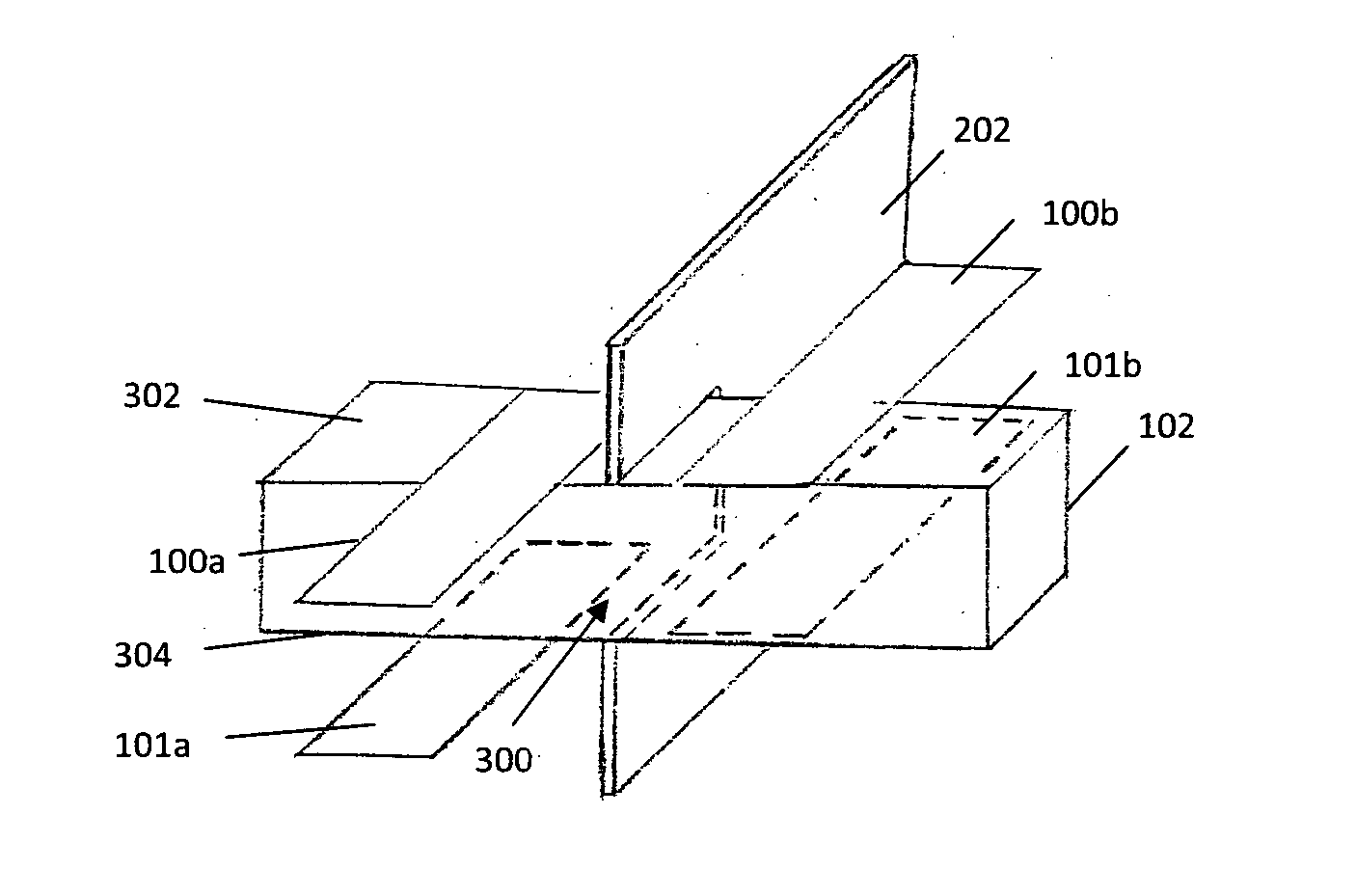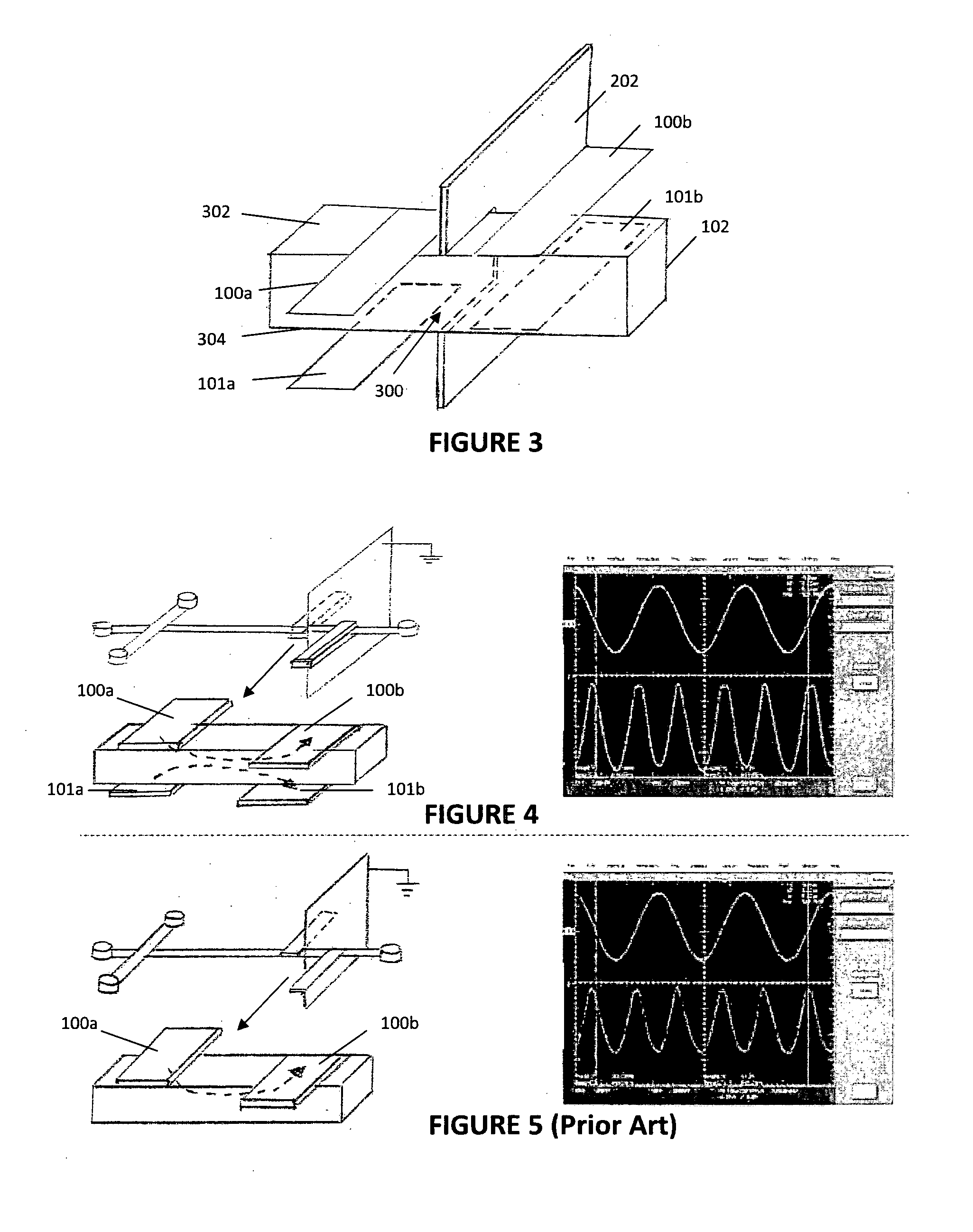Contactless conductivity detector
a conductivity detector and contactless technology, applied in the direction of material analysis by electric/magnetic means, measurement devices, instruments, etc., can solve the problems of sudden change in zero leveled output voltage or peak in daq graph, not fully met, and not easily made portable by optical detectors. , to achieve the effect of improving sensitivity and detection limit, improving sensitivity, and reducing power inputs
- Summary
- Abstract
- Description
- Claims
- Application Information
AI Technical Summary
Benefits of technology
Problems solved by technology
Method used
Image
Examples
Embodiment Construction
[0063]Referring to FIG. 3, the present invention in one preferred embodiment comprises a capacitively-coupled contactless conductivity detector comprising a microfluidic electrophoretic chip (not shown) having a separation channel 102 thereon, first and second emitting electrodes 100a, 101a, and first and second receiving electrodes 100b, 101b on the chip and adjacent the separation channel 102. Between the emitting electrodes 100a, 101a and the receiving electrodes 100b, 101b is a detection area generally indicated with arrow 300. As will be described in detail below, the first and second emitting electrodes 100a, 101a are configured to concentrate signals emitted from one another to the detection area 300, and the first and second receiving electrodes 100b, 101b are configured to extract signals from the detection area 300.
[0064]It can be seen from FIG. 3 that the separation channel 102 is defined by channel walls, with the first emitting electrode 100a and the first receiving ele...
PUM
 Login to View More
Login to View More Abstract
Description
Claims
Application Information
 Login to View More
Login to View More - R&D
- Intellectual Property
- Life Sciences
- Materials
- Tech Scout
- Unparalleled Data Quality
- Higher Quality Content
- 60% Fewer Hallucinations
Browse by: Latest US Patents, China's latest patents, Technical Efficacy Thesaurus, Application Domain, Technology Topic, Popular Technical Reports.
© 2025 PatSnap. All rights reserved.Legal|Privacy policy|Modern Slavery Act Transparency Statement|Sitemap|About US| Contact US: help@patsnap.com



